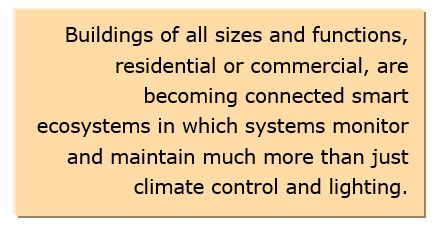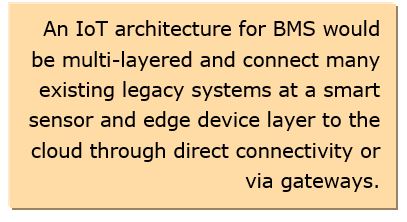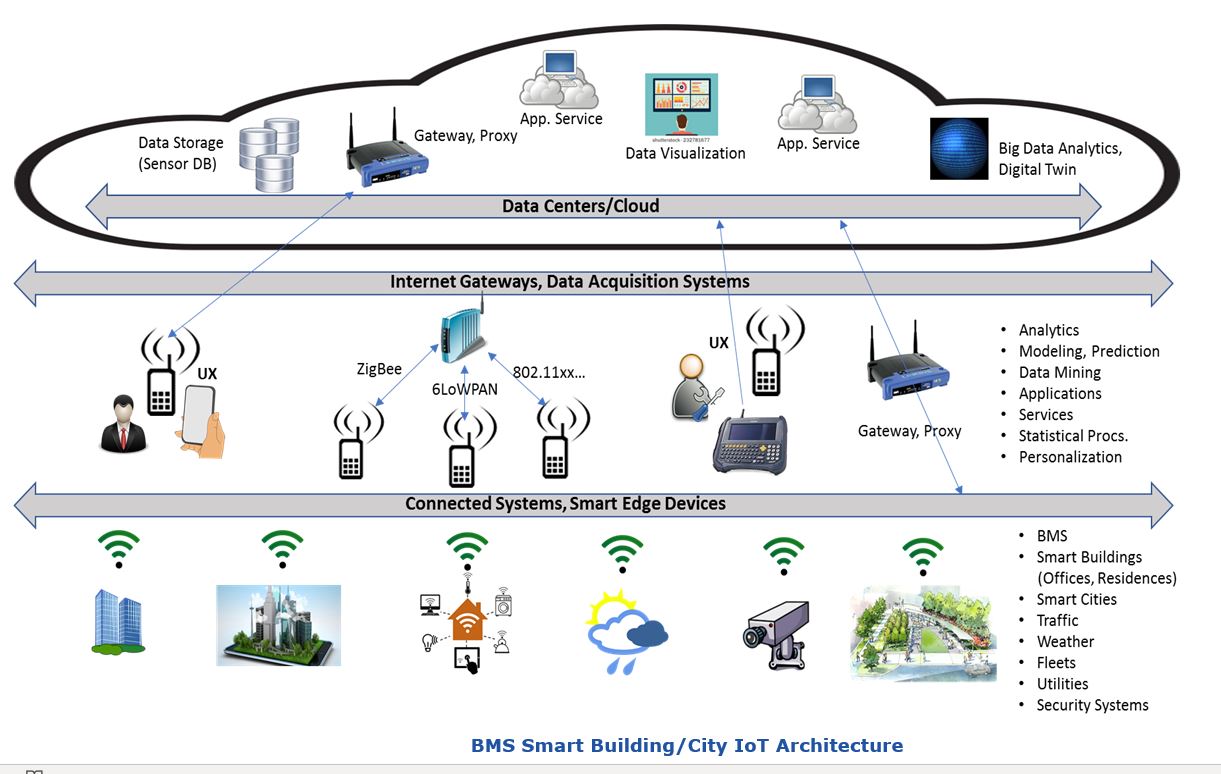

Today, building automation has evolved significantly beyond control systems for HVAC and lighting. While the concept 
Buildings of all sizes and functions, residential or commercial, are becoming connected smart ecosystems in which systems monitor and maintain much more than climate control and lighting. Intelligent edge devices will do more than just gather point data. They will also aggregate, analyze, and stream data to edge computing where advanced predictive analytic engines will enable new levels of control and security, while significantly improving the overall user experience in the building environment. These new systems will be smarter, self-learning, innovative, and highly sophisticated.
For owner-operators across an array of residential, commercial, and industrial buildings, the cost of adding smart building technologies could range from hundreds of thousands to millions of dollars. For many companies, the price tag is too high, due, in large part to closed, custom, and proprietary building equipment and software that can only be upgraded by the original manufacturer.
Until recently, this has led to a lack of cost-effective solutions that has kept OEMs and system integrators from delivering affordable smart building management systems (BMS) to a market with a great need for them. Often, owners-operators of small-to-medium size building do not have automated access to data in their facilities, making it difficult to realize energy savings, lower maintenance costs, and improve overall asset performance management (APM) for their buildings.
Today, a lower-cost alternative is to instrument a building using IoT technologies, including low-cost sensors, on premise gateways, distributed control systems, and cloud analytics.
Currently, commercial buildings account for approximately one-fifth of total US energy consumption; with office space, retail space, and educational facilities representing about half of the commercial sector energy consumption. Even marginally improving energy efficiency to this sector would represent significant cost savings for owner-operators and for energy demand on a national level.
Most BMSs today are analogous to a supervisory control and data acquisition (SCADA) system used in industry. BMSs monitor and control a host of building systems. These include heating, ventilation, air conditioning (HVAC), lighting, and other separate systems such as elevators, fire, safety, security, and building access controls. Typically, the BMS supports a user interface that allows operators to program systems and maintain setpoints, generate alerts on abnormal conditions, and execute pre-programmed scripts, similar to a programmable logic controller (PLC) used in industrial settings.
Unfortunately, many buildings today lack a fully integrated BMS, which requires operators to manage multiple independent systems. In addition, many of today’s BMSs tend to be proprietary, expensive to implement, brittle, and difficult to modify or extend.
The power of the open internet is sustained today by the very large array of proven tools and solutions for connection, scale, integration, and complexity. As sensors that connect the physical world of buildings and equipment with the digital enterprise become more intelligent, industry-standard internet protocols (IP, HTTP, web servers, cloud platforms, etc.) and abstractions will come into play to simplify development.
OEMs of physical equipment for HVAC, lighting, physical access, and control of these systems are assessing the benefits of the digital twin concept. This is where the physical world of buildings, equipment, and facilities are connected to virtual 3D models. In these digital representations of the smart buildings (and ultimately entire smart cities), all aspects of this environment can be monitored, controlled, and optimized for a better user experience. Intelligent sensors and edge devices at the lowest levels will stream real-time data that will power advanced predictive and prescriptive analytics to ensure optimum efficiency for energy use, environmental control, and security.
Just as the IoT architecture and technology is being applied to manufacturing and production systems across industry, the next generation of building management systems will be driven by IoT ecosystems of smart connected sensors, edge devices, equipment, analytics, and systems architecture. Where we had standalone BMS for an individual building or facility that were proprietary, closed, and customized; IoT-driven BMS will be an open, connected, and smart ecosystem of buildings that encompass a system of systems that become a smart city.


IoT system architecture can easily be applied to BMS. Internet-connected edge devices, such as sensors to monitor electric power usage, can directly connect to energy web services; non-internet type devices can send data to the cloud via a gateway. Once data is in the cloud, this opens up a wide array of tools, such as analytics, and other applications available to process, analyze, visualize, and act upon the information.
Clearly, IoT technologies that enable smart connected ecosystems are driving the next generation of BMS and expanding to include smart cities and infrastructure. Today, the architecture of smart buildings and cities encompasses cloud services, advanced analytics, and concepts like the digital twin. Owner-operators of buildings and infrastructure want their assets to operate efficiently, safely, and offer users and residents an optimal user experience. IoT technologies will become an integral part of BMS and the future of smart buildings, cities, and infrastructure.
If you would like to buy this report or obtain information about how to become a client, please Contact Us
Keywords: Building Management System (BMS), Smart Buildings, Smart Cities, IoT, Smart Sensors, Ecosystems, IoT/BMS Architecture, ARC Advisory Group.

